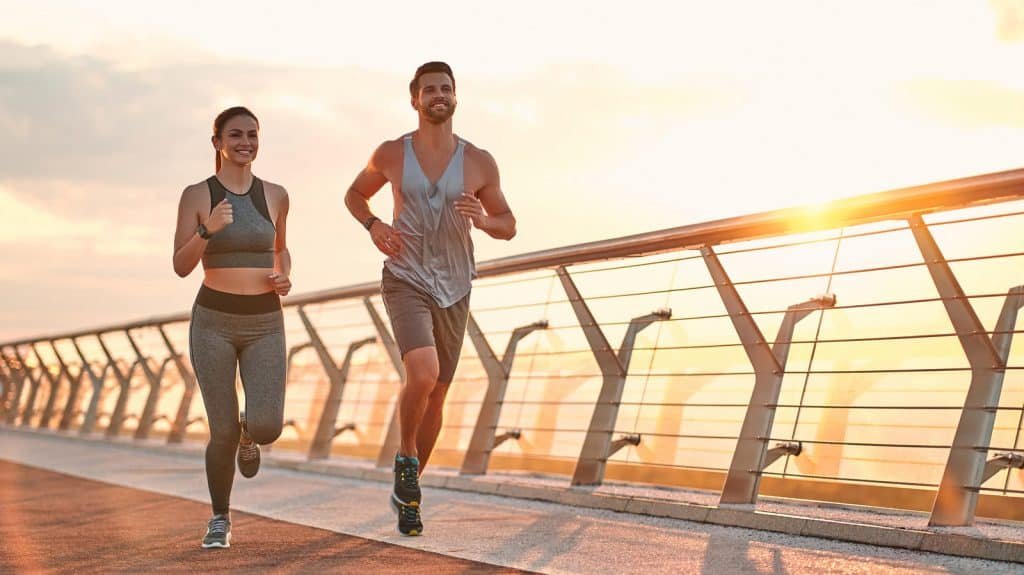
Make This Christmas Pain-Free: 10% Off on Supportive Wear!
Holidays are coming, which means that let’s welcome them with joy, laughter, and, of course, some comfort! At 360 Relief,

Active people can put a lot of pressure on their legs and knees while taking part in sports, training sessions, and gym workouts which may result in sports injury. Pushing limits and building up muscle is a large part of staying fit and enjoying the sport. However, it is important to look after your legs and knees so that they will work and stay pain-free for longer. From targeted exercises to specialist support aids, there’s a lot you can do to help sports performance, prevent sports injury, and protect joints on the move.
Table of Contents
ToggleKnees are the largest joint in the body and come under a lot of strain as we run, walk, job, climb and cycle. It can be very prone to sports injury. This is especially true if the surrounding muscles are not strengthened adequately before a training session, race or match.
If your knee is painful, it can be tempting to avoid exercise altogether. While you should consult a doctor if you suffer from knee pain, doing some gentle exercise can be beneficial to it. Stopping all activity could cause it to stiffen up and can take longer to heal as a result. Always stop immediately if you experience more pain or are concerned about how to protect your joints.

Some good exercise ideas that can help strengthen the areas around the knees include:
The knees are not the only part of the legs that can be vulnerable to sports injury. Pulled muscles, snapped tendons, falls and sprains can all affect the legs and damage sports performance, leading to sport injury. The key to keeping legs as injury-free as possible is lots of exercise. This is because exercise will help strengthen muscles, joints and tendons. As a result, your legs will withstand greater impacts on them. They will also help you to run and jump faster and will recover quicker after training.

Always check with your doctor before changing or starting a leg exercise regime. This is most important after a leg injury because you don’t want to set your recovery back. Warm up first so that the circulation gets going before you start the main exercises.
Do some bends and stretches to warm up, moving slowly at first to help your body get used to it. You can build up the range of motion as you get further into your exercise regime. Push yourself to see what you can do, but not to the point of injury or excess amounts of stress.
Some leg exercises work to improve balance, which also works the core muscles. Standing on one leg or on tiptoe can help improve posture, balance and co-ordination. These are all crucial skills for many sports. You can build muscle strength with knee or leg raises, squats and lunges to help protect joints. You can also use resistance bands. These come in different strengths to help you build up your training and sports performance as your legs get stronger.
Sprained ankles are a common form of sports injury. They can be very painful, but usually get better on their own. Speak to a GP or sports injury clinic if you are worried about your ankle recovery, avoid any strenuous activity for the first 48 hours. Get plenty of rest and wrap your ankle with an ice pack to reduce swelling. After that, try to stay mobile as much as you can. This will help prevent your ankle from getting stiff.
Good exercises to try include:
Sometimes, all your legs, knees and ankles need to help keep them injury-free is some extra help. This can be in the shape of support bands, straps, compression socks and braces. They keep the joint in the right position and take much of the pressure off the body. They can also work by helping stabilise blood pressure, regulating temperature and correcting posture. Using these types of support devices can hugely improve sports performance. This is because they directly address any problems with your joints and correct them while you are on the move.
Support aids can also help reduce pain from conditions like arthritis, tendonitis and wear and tear from an active lifestyle. Or after an operation, once your doctor has signed you off to resume training. You can start wearing them at any stage, even before you feel pain or have any injuries. They can really help target painful or weaker areas so you don’t have to stop or modify your training. They are especially good for leg injuries and conditions like cartilage damage, arthritis, tendonitis, muscular tears and joint dislocation.
Finally, what you eat can have a huge impact on your sports performance and the likelihood that you will suffer a sports injury. For instance, eating oils rich in omega-3 fatty acids in food or supplements can help reduce joint pain and stiffness. Some studies have shown that eating a healthy amount of fibre can protect joints and help you prevent knee pain. Fibre contains a protein that can help reduce inflammation. It also helps you feel full so you don’t overeat and gain too much weight.
Good foods to help fight joint inflammation include:
Avoid highly processed foods like chips, high-sugar snacks, chocolate bars, processed meats and alcohol. Eat well, exercise healthily and look after your joints to help you to protect your legs for longer.

Holidays are coming, which means that let’s welcome them with joy, laughter, and, of course, some comfort! At 360 Relief,

Happy Cyber Monday to everyone; it is a perfect occasion for 360 Relief to offer a special discount of 10%

This Black Friday, take advantage of exclusive 10% savings on some of 360 Relief’s best-selling compression socks and support braces!

Everyday life includes walking up stairs, but knee discomfort can make this basic activity difficult. Walking up or down stairs

Cooking is a beloved activity for many, but for those struggling with knee pain, standing in the kitchen can quickly

We’ve all been there. On a ride in a car, for instance, to the country home for a weekend break

Gardening is enjoyable for many people and those who like tending to their lawns and plants usually find it therapeutic

Do you have a painful knee problem that takes you to physiotherapy…for an injury that hampers your daily living…your workout

Training can be very much associated with some pains and injuries that may be experienced by the trainers. As there

Office workers often spend hours seated at their desks, focusing on tasks while unknowingly putting their health at risk. The

Winter often brings more than just a change in weather; for many, it also means dealing with unexpected swelling in

Compression socks have become a critical tool for athletes across all sports. Whether you’re a marathon runner, cyclist, or weightlifter,

October marks the beginning of National Cholesterol Month in the UK, a time dedicated to raising awareness about cholesterol and

Overall, there is nothing to match the experience of watching musicians perform live in an outdoor concert in Glastonbury. However,

Today charity runs have gained popularity as a way of raising cash for a cause in the United Kingdom. From
Please enter your email to subscribe to our newsletter for exclusive offers and updates
Copyright © 2025 | 360 Relief Ltd | Sitemap

